How to choose skylights and rooflights
Both skylights and rooflights both have the same main objective; to let in more natural light. Here's how to choose them to suit your property.
Skylight and rooflight installation is on an upward trajectory for a multitude of reasons, and in 2024, we’ll be seeing them a lot. Connecting with nature is a growing trend, and rooflights and skylights can really bring the outdoors in. Filling your interior space with light and views of the sky and moving clouds is not only pleasing, it promotes health and wellbeing in your home and will add value to your property.
Good ventilation is a bonus of opening skylights and rooflights, as are decreased energy bills. Cambridge Skylights says that “when it comes to skylights, insulation is critical. It’s all about creating a barrier between the interior and exterior that helps keep the warm and cold air inside. With proper insulation, your energy costs can be reduced by up to 40%”. However, there are things to consider when choosing.
What is a skylight and a rooflight?
Both skylights and rooflights have the same main objective; to let in more natural light. Typically a rooflight is installed on a flat roof, with a double or triple-glazing, while a skylight is more commonly installed on a traditional pitched roof. You can get a rooflight on a pitched roof, but it will be built ‘out of plane’, meaning it’s not in line with, or flush with the roof covering.
You can choose between fixed or open skylights and rooflights. The former are great if you’re just looking for extra daylight, the latter give an abundance of daylight, but have the added bonus of allowing access to ventilation for better airflow and temperature control. While an open or vented skylight or rooflight provides more benefits, they can come with more costly installation fees.
You can also install walk-on rooflights, which are ideal if you’re converting a roof terrace or basement and they can be fitted internally or externally.
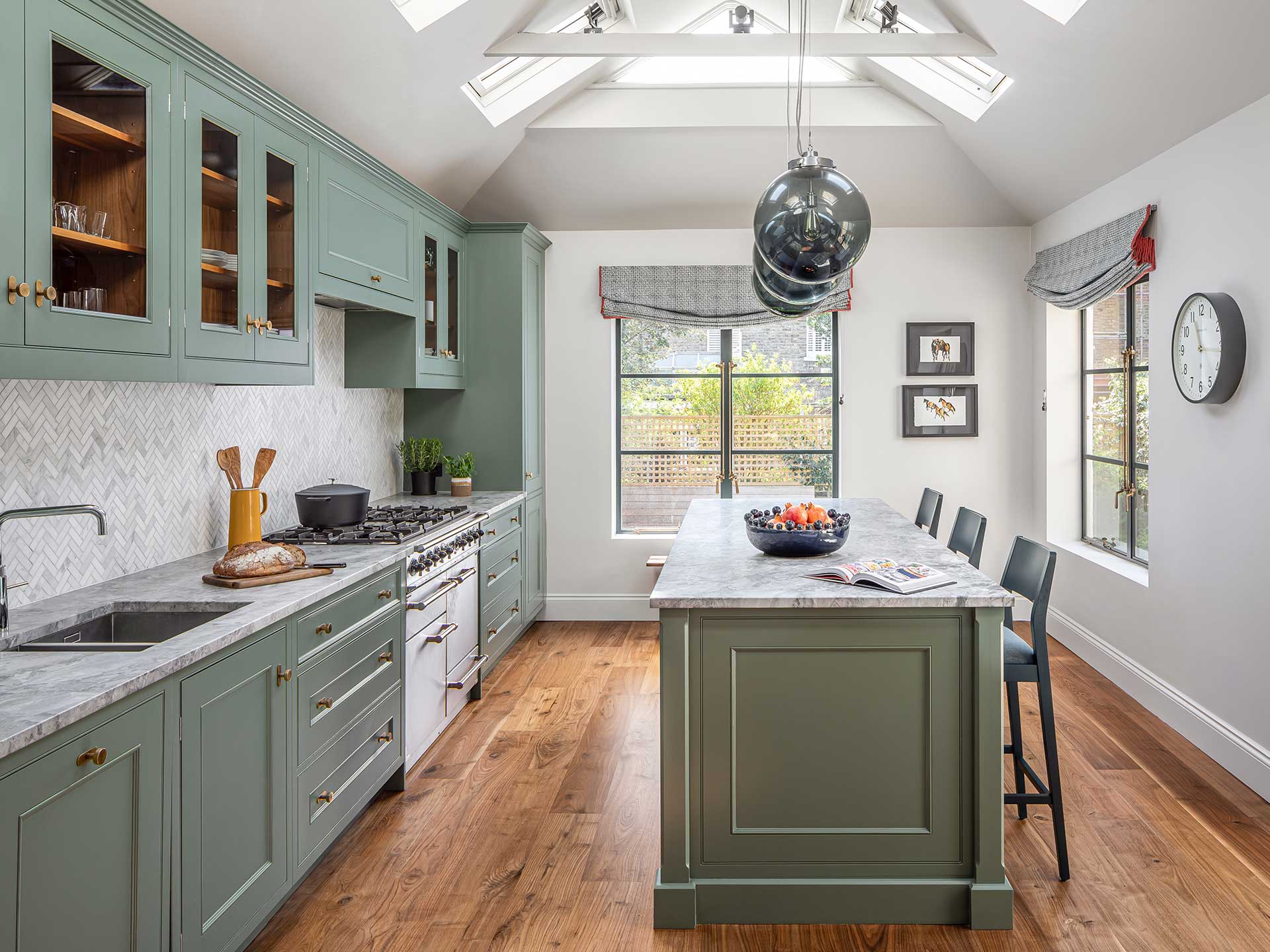
Image credit: Gabriella James
What are roof windows and roof lanterns?
There are a couple of other options to consider when looking into skylights and rooflights, with roof windows and roof lanterns. A roof window differs from a rooflight or skylight, as it’s installed at a pitch of a minimum of 15° on the same orientation and plane.
By contrast, roof lanterns come in a variety of shapes. Predominantly used on flat roofs, in structure they can look like the roof of a conservatory. Roof lanterns vary in size, but are designed to add height to a room. While they appear to be a modern feature, roof lanterns were actually first used by the Victorians and are commonplace in older properties. Positioning-wise, they’re great in a kitchen to flood the room with natural daylight.
If you’re adding a roof lantern to an existing flat roof, then double-check if you’ll need planning permission due to its height. As if the roof lantern protrudes any higher than 150mm from the existing roof plane, it will need to be checked. They also must not be any higher than the highest point of the house.
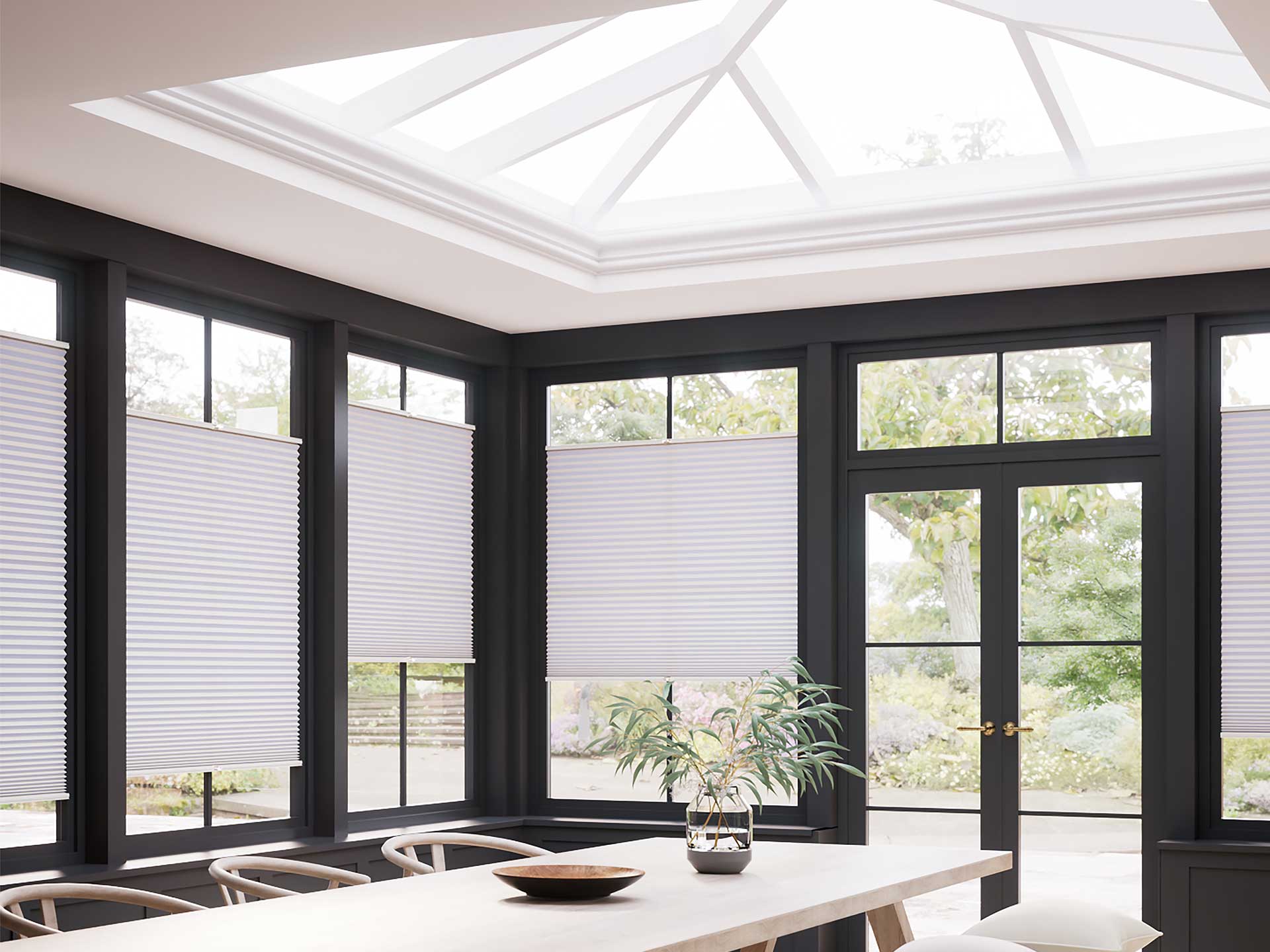
Image credit: Blinds to go
Things to consider with rooflights and skylights
If not installed in the correct place or the correct size for the room, you could experience too much light or heat. Using solar control low-E (emissivity) glass reflects the most solar heat and can help with heat regulation in your home, reducing glare and protecting from UV rays, which means that your soft furnishings won’t fade as much. However, this type of glass is more expensive than regular glass and it can reduce the amount of natural light coming in.
When it comes to glazing, glass is more expensive than plastic, but much more durable. Tempered glass is stronger than regular glass as it’s undergone a heating and cooling process, while laminated glass has a layer of plastic sandwiched between two panes of glass.
Think about how your rooflight or skylight will open. You can choose a fixed option, a vented skylight or rooflight (opening to around 360mm) or an egress skylight, which opens to a 70° angle.
When choosing your skylight type and position consider how you will get to it to clean it. Buy an extendable cleaning device or get the professionals in. You can also opt for self-cleaning glass, which is treated in a way that means the water dries quickly on it without streaking. Be aware that fixed skylights can be prone to collecting flies, which will need to be removed.
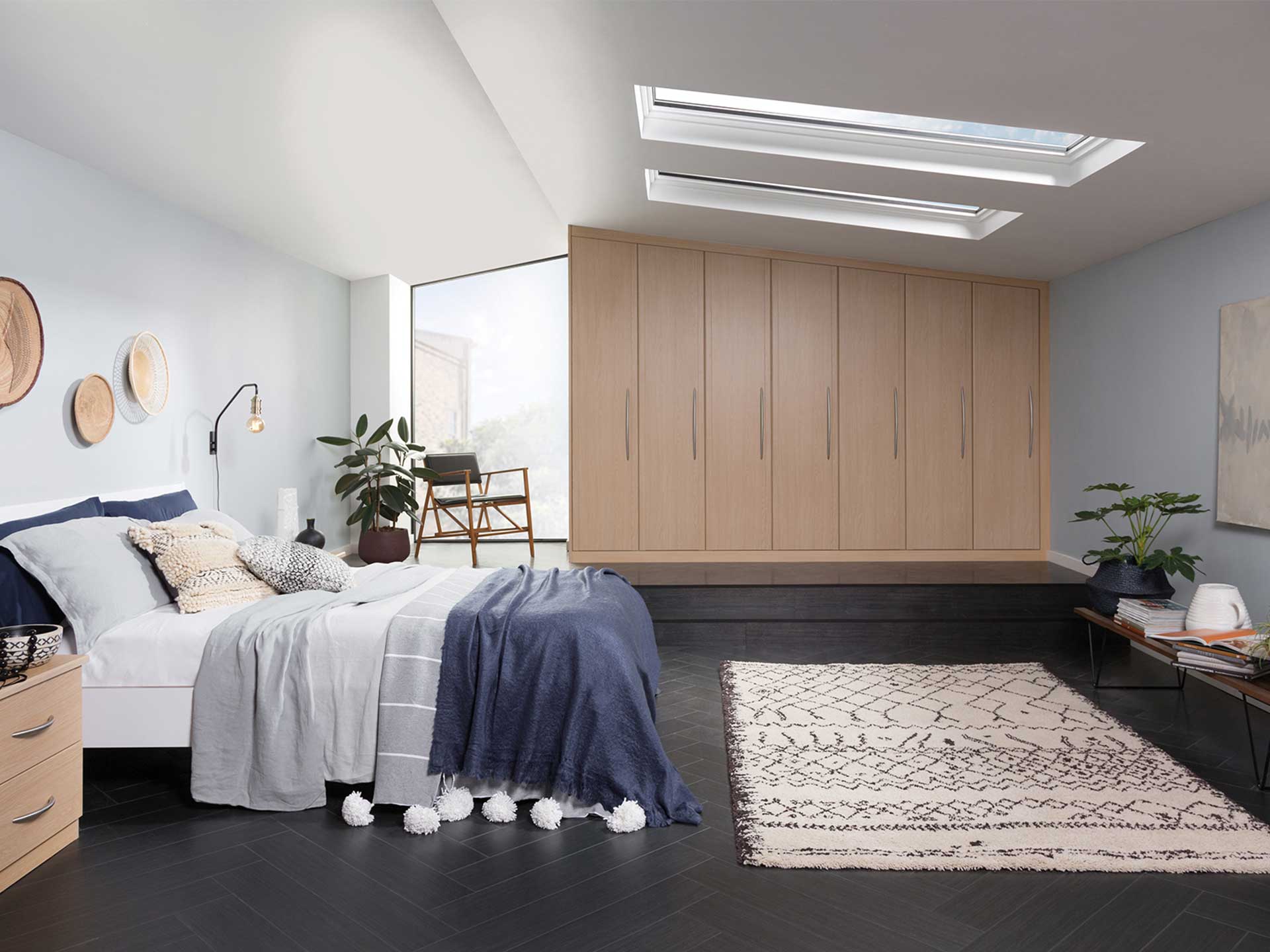
Image credit: Sharps
What you need to know about insulation
In recent years there have been huge advances in glass technology and skylight design, meaning lower heat escape, improved energy efficiency and lower bills. This is measured in U-Value, essentially the rate of heat transfer (thermal transmittance) from inside to outside, so you’ll need to be aware of this when choosing your skylight or rooflight.
According to First in Architecture, “U-Value is measured in W/m² K, which is broken down as the rate of heat flow (in Watts) through 1m² of a structure when there is a temperature difference across the structure of 1 degree (K or ˚C)”. Therefore the lower the U-Value score, the better the sustainability and performance.
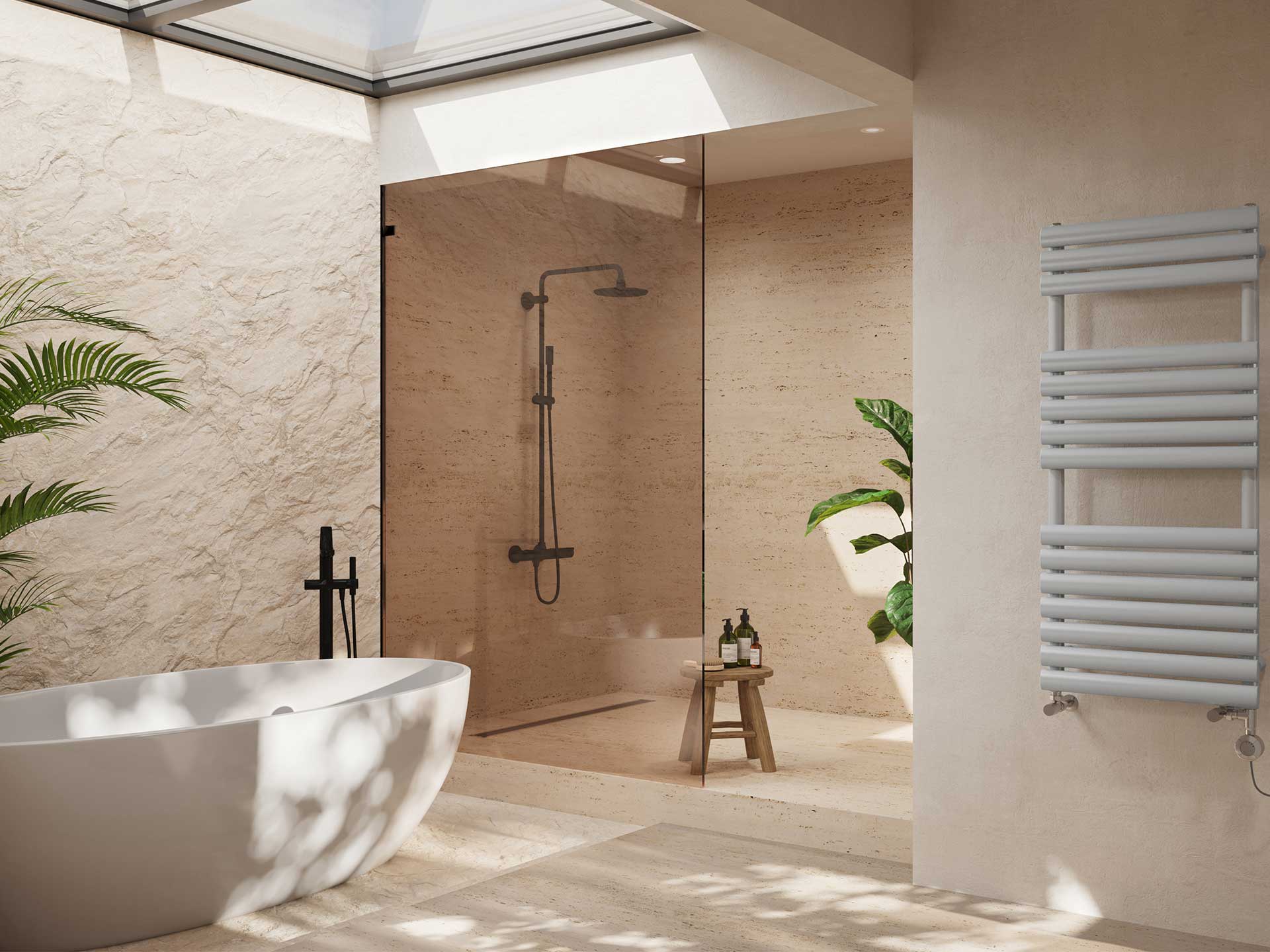
How you should choose the position?
It’s really important to take your time when considering the placement of your rooflight or skylight as its positioning will make a big impact on how much daylight comes into your home. The direction that both your home and room are facing plays a key part in where it goes.
For example, north-facing windows have a constant light source, but it’s cooler. South-facing windows will give the largest amount of heat. This is great for the winter, but potentially too hot for the summer, so you will need to consider ventilation. East-facing windows will give the most light and heat in the morning, while west-facing windows will give the opposite.
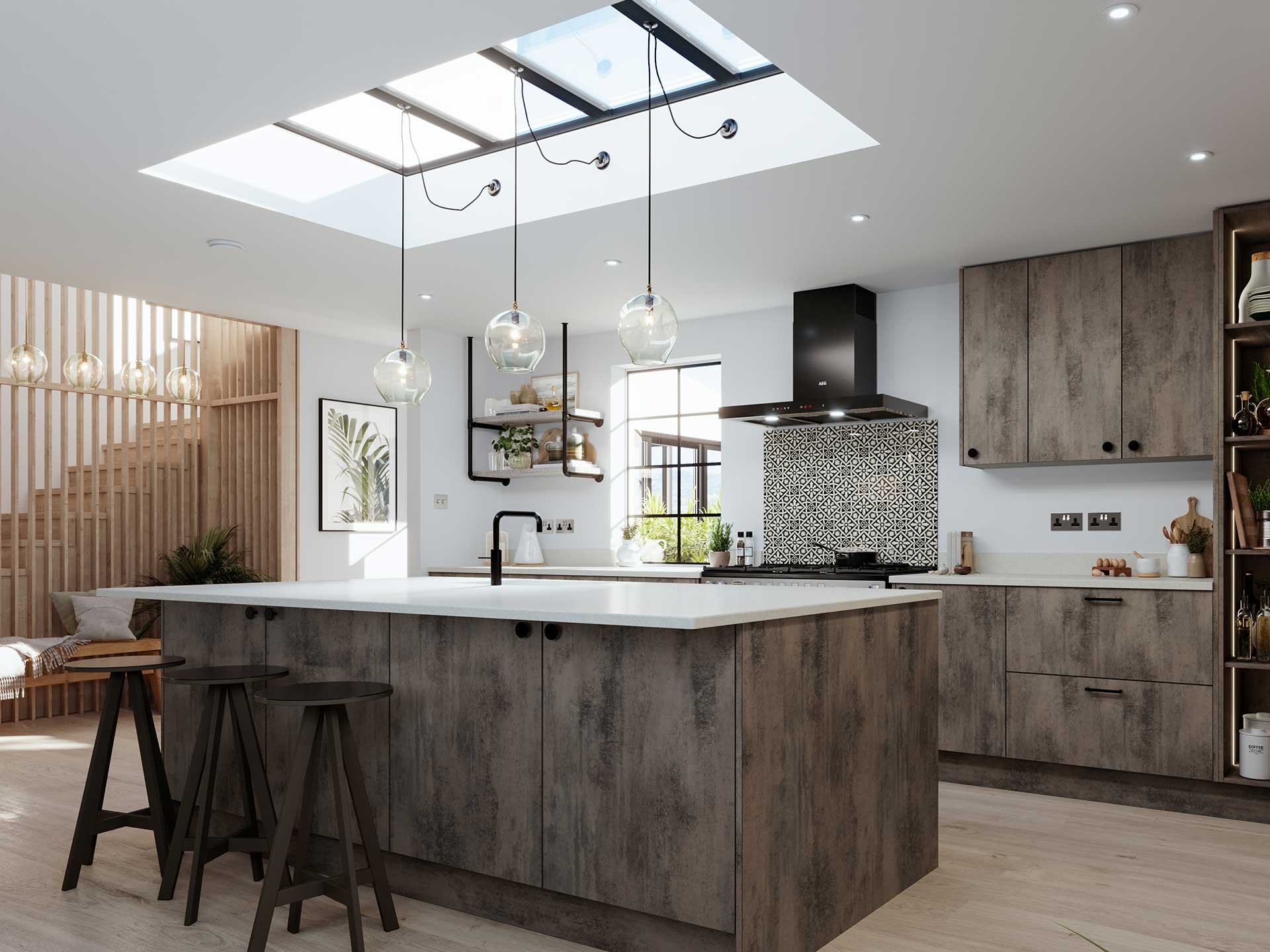
Image credit: Loch Anna Kitchens
Look at your light and views
Always aim to light the darkest areas of your space and don’t forget to think about the layout of your furniture. If you’re sitting on the sofa you might not want direct sunlight above your head. When thinking about positioning, consider coordinating the natural light with your artificial lights and think about different times of day, where the shadows will fall, and what kind of atmosphere you want to create.
Lastly, don’t forget the view and what the windows will look out on. Notably, you don’t want anyone to be able to see in, nor would you want your natural light to be obstructed by large trees. Positioning your skylights or rooflights on opposite sides of the room can create good air circulation when the windows are open.
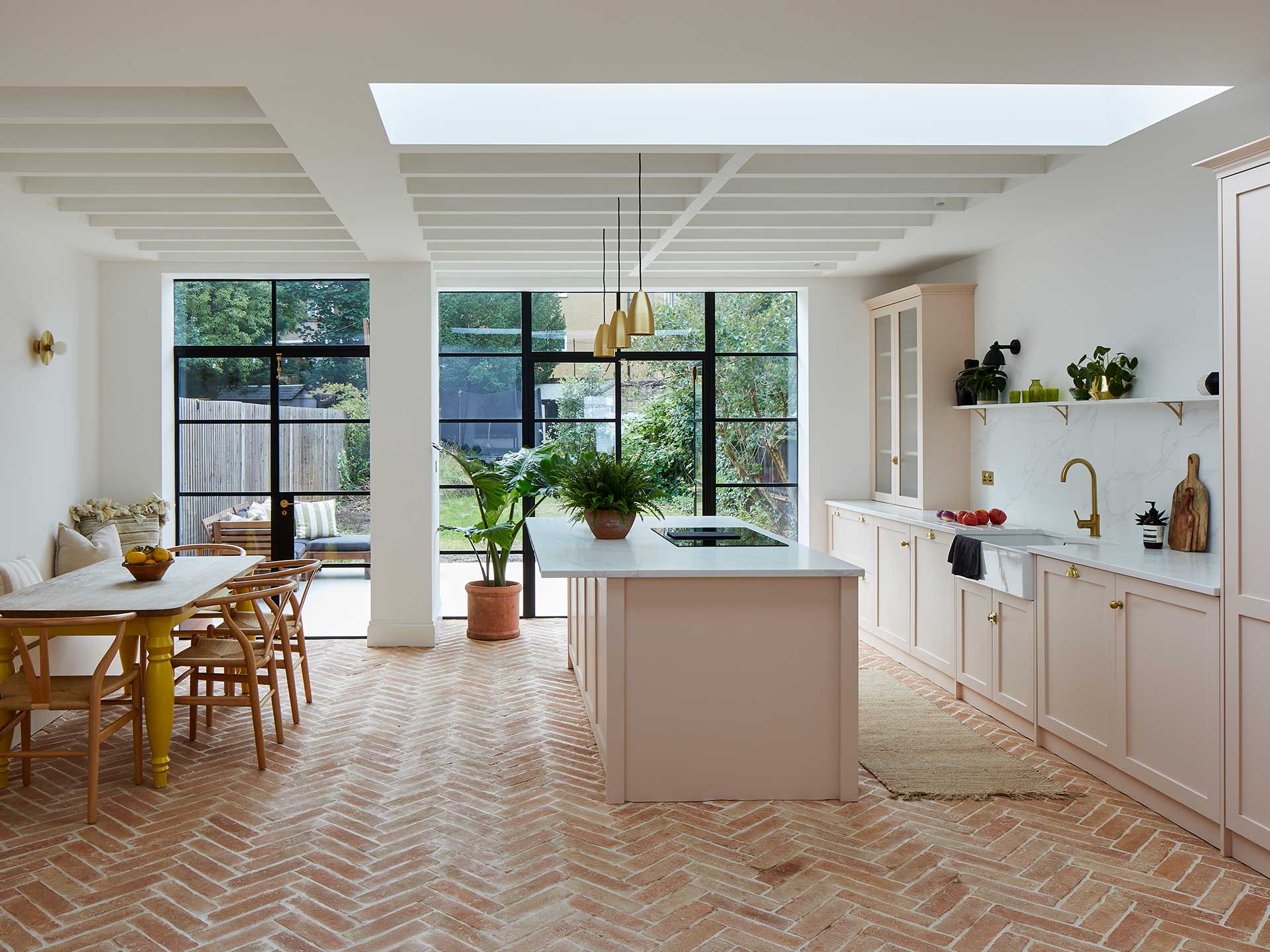
Image credit: Ca Pietra
What to consider for different roof pitches
A pitched-style rooflight will not necessarily let in more light than a flat roof, but you will need to consider your angles. Sun Square says, “The minimum recommended pitch for a flat roof skylight is three degrees, for property owners requiring more efficient drainage from their new roof lights, it is worth considering increasing the pitch of your new skylight to five degrees.”
“An upstand plays an important role in ensuring your rooflight fits well. They are the frames a rooflight sits on, creating enough height from the roof surface and the necessary pitch for water run-off”, it adds. If your roof pitch is between 15° and 75°, you’ll be looking at a skylight not a rooflight.
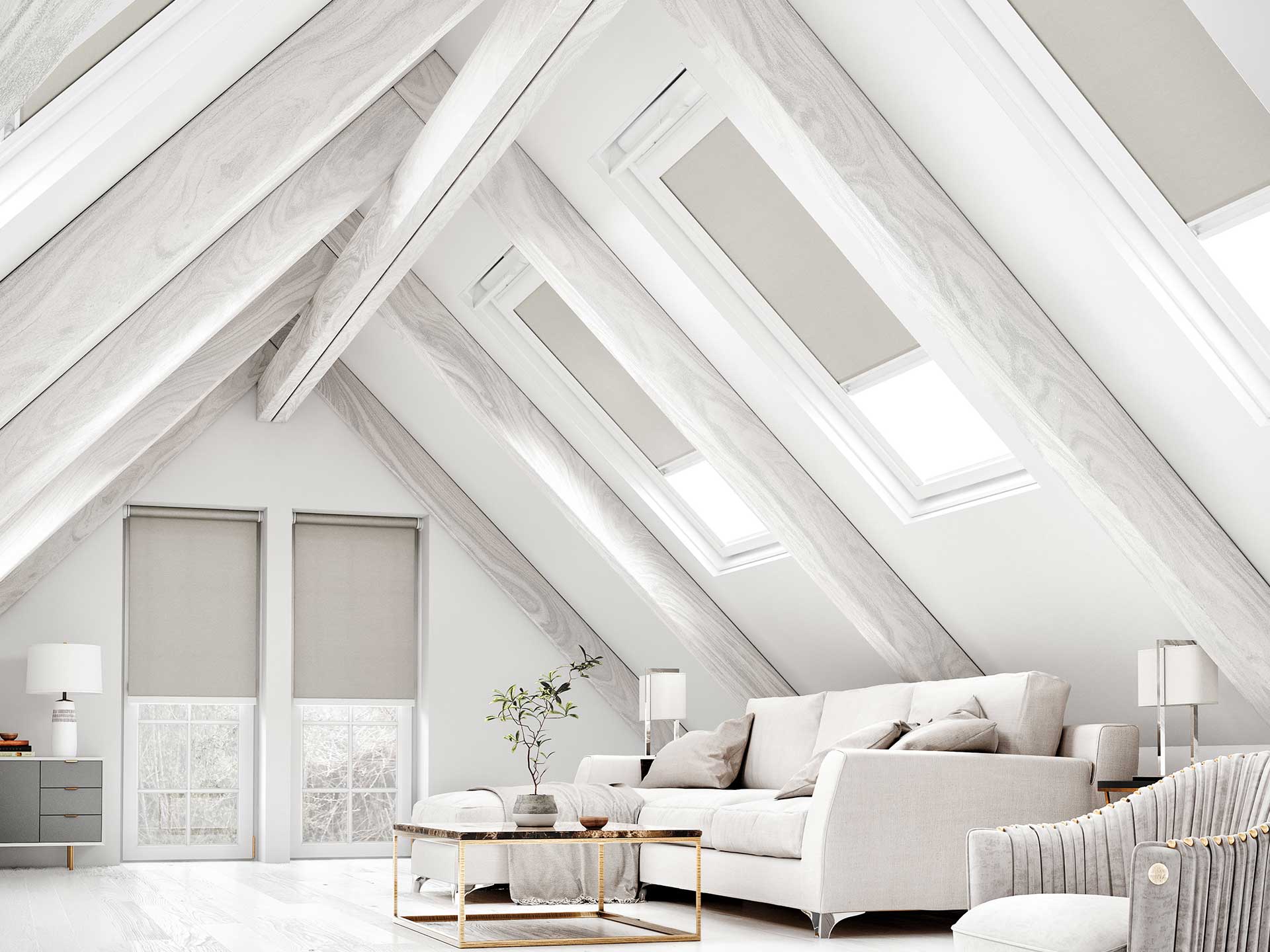
Image credit: English Blinds
What size and shape should you go for?
Think about the orientation of your room when deciding the size and shape of your skylights or rooflights. One large rooflight can have a greater design impact than lots of smaller ones, although think about the style of your property. Modern architecture might suit a large expanse of glass and look better than in a period property, while circular rooflights are great for bringing a contemporary feel and can look great positioned above a shower or in a kitchen.
Energy.gov says that “the physical size of the skylight greatly affects the illumination level and temperature of the space below. As a rule of thumb, the skylight size should never be more than 5% of the floor area in rooms with many windows and no more than 15% of the room’s total floor area for spaces with few windows”.
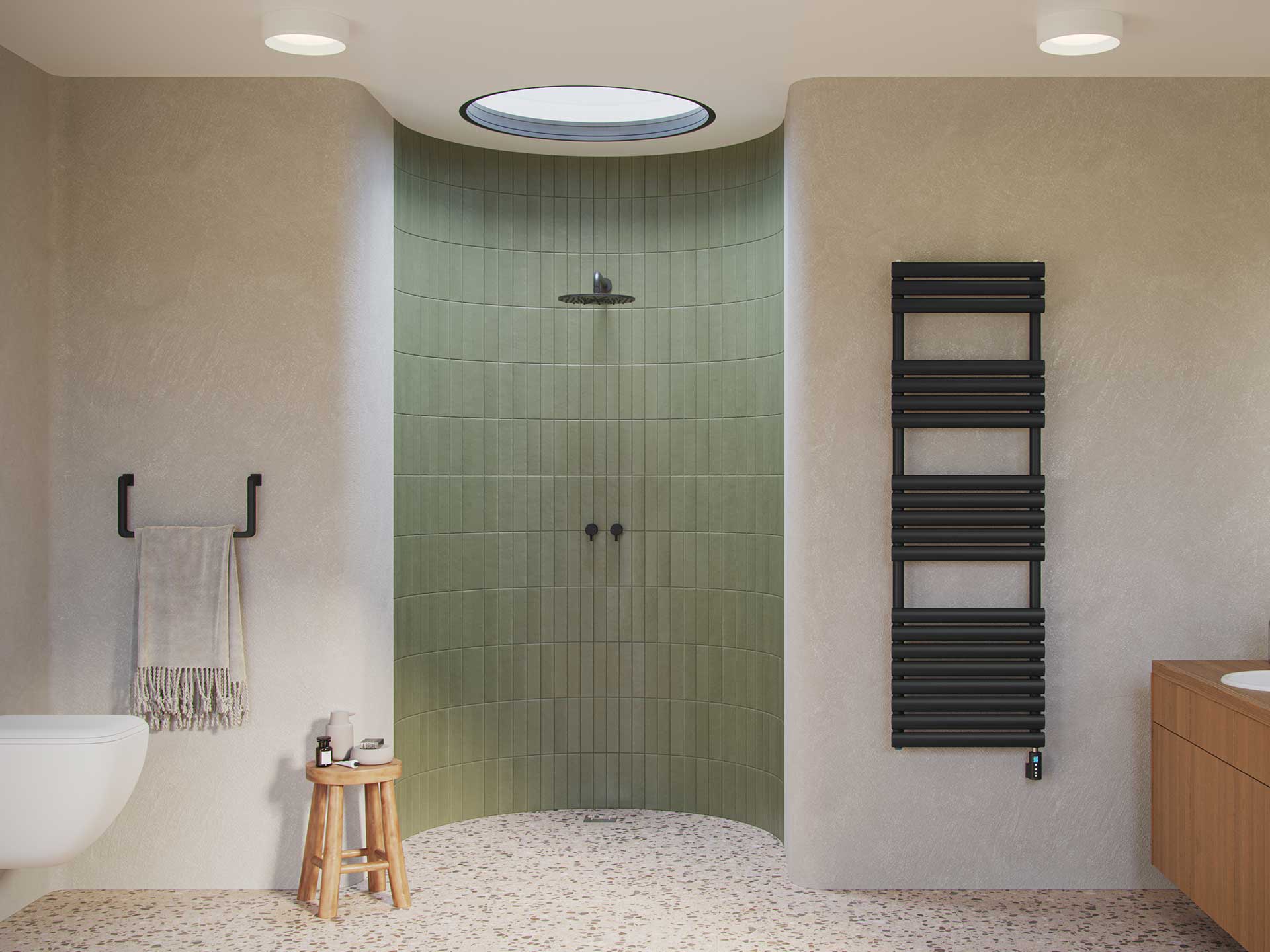
Image credit: UK Radiators








